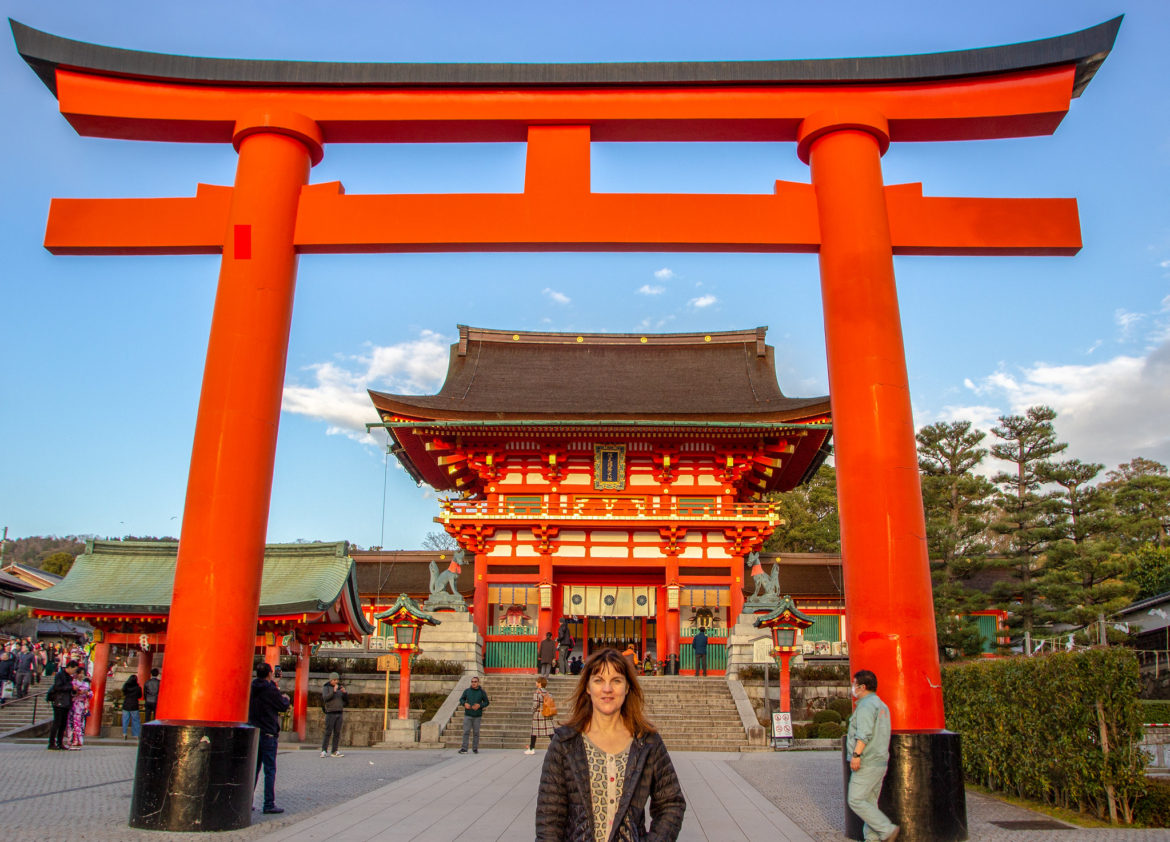Kyoto is one of the most amazing cities in the world, so it can be quite a dilemma to only have one day as a tourist. Overall, I enjoyed one Buddhist temple, one Shinto shrine and the biggest market in my Kyoto one day tour. It flowed into a spectacular day, and I recommend it for others also limited to a day.
Kyoto is part of Japan’s metropolitan region called Keihanshin, that also includes Osaka and Kobe. It’s overall one of the biggest spiritual hubs in Japan, with 400 Shinto Shrines and 1,600 Buddhist Temples and 16 of them as World Heritage Sites. Kyoto also has numerous awesome markets offering a vivid taste of the culture. With only one day for tours, I chose one shrine, one Buddhist Temple and one market, while using their iconic trains enjoying a healthy slice of Kyoto culture and lifestyle. And that is an itinerary that I recommend for anyone spending a day in this historic city.
Japan’s Shinto Shrines and Buddhist Temples Background
Exploring the Japanese spiritual practices and life is one of the best ways to experience their culture, wherever you travel in this unique country. The 2 main faiths in Japan are Shintoism and Buddhism, with over half the population following both spiritual practices. Shintoism is the indigenous religion of Japan, embracing animism with “kami” or gods as sacred spirits taking forms of nature, such as, rain, wind, mountains and trees. Shrines are dedicated to various Gods (especially of nature) and ancestors as the place of worship for performing rituals.
Additionally, many people in Japan follow both Buddhism, as well as Shintoism. Buddhism arrived in Japan the 6th century from India via China and Korea. Most Buddhist traditions focus on transcending the individual self by following the path of Buddhahood, ending the cycle of death and rebirth and ultimately attaining Nirvana. The Buddhist Temples are a center of worship and study for the community. Various practices in the temples include chanting scriptures, lighting candles, burning incense and meditation.
My Kyoto One Day Tour – Fushimi-Inari Shrine, Buddhist Temple and Nishiki Market
As an Acupuncturist-at-Sea, my ship had an overnight stay in Kobe. I had one full day off and decided to go to Kyoto. From Kobe, 2 crewmembers and I took the Bullet Train, arriving in Kyoto in less than an hour. I was thrilled to take my first ride on the Bullet Train, gliding along at speeds of 320 km/h (199mp/h). It is so clean, convenient and smooth to the point that you almost can’t feel the train moving. (It confounds me that the U.S. has no speed rail like they do in Japan and China.) We arrived during Cherry Blossom Season, but it was an unusually cold day.
Fushimi-Inari Shinto Shrine
My favorite site in Kyoto was the Fushimi–Inari Shinto Shrine and many people agree, as it is one of the most popular sites in the city. The Fushimi Inari Shrine is free and open daily from sunrise to sunset. It’s accessible via JR Inari Station on the JR Nara subway line (two stops south of Kyoto Station). The 1,300-year-old Fushimi-Inari is famous for its thousands of vermilion Torii Gates over a 2.5 miles trail leading through the forest to the sacred Mount Inari, standing at 233 m.
Torii Gates are symbolic as the transition from mundane to spiritual. Inari is the Shinto God of Rice, with the fox as a messenger. Therefore, fox statues are standing throughout the shrine. It takes about 3 hours to make the trek to the top of the mountain and can be slightly strenuous. However, there are many places to stop along the way, such as, tea houses and viewpoints.
Nishiki Market or “Kyoto’s Kitchen”
The massive Nishiki Market in central Kyoto’s Gion area is often called “Kyoto’s Kitchen.” It’s known for having the best Japanese traditional food in the city with endless labyrinths of food stalls. The entire market is under cover, so this can be a great thing to do if it’s cold or rainy outside.
We walked and sampled here for a couple hours over lunchtime, grazing on eclectic samples, such as, dumplings, yaktori and macha tea desserts. Also, I sampled and discovered Narazuka, pickles made from fruits and vegetables. Furthermore, there are numerous seafood samples of small octopus, squid and fish cakes. Besides food this market is also good for ceramics, textiles and handicrafts.
Kyoto’s Buddhist Temples
Kyoto is home to over 1,600 Buddhist temples, with some of them going back hundreds of years. I went to one that is not as well known, but it was still a nice sanctuary from which to connect with the culture and Buddhism. The most famous temple district is Higashiyama, where you can find the oldest temples, for example, the Kiyomizudera.
This “Pure Water Temple” is near the Otowa Waterfall and one of the most esteemed temples in Kyoto. The Tofuku-ji Temple is one of the largest temples in Kyoto and important in the Zen sect of Buddhism. Thirdly, Saiho-ji is a Zen Buddhist Temple declared as one of Kyoto’s 17 UNESCO World Heritage Sites. It’s famous for its moss gardens, with over 1,200 species of moss giving it a surreal appearance.
Overall, Kyoto One Day Tour
Putting Kyoto in a nutshell of one day is a challenge. However, the most important thing is to plan beforehand, so you don’t waste time floundering. Therefore, I suggest seeing one Shinto Shrine, one Buddhist Temple, one market and use the train for transit. But plan ahead and decide for yourself which one of those you want that to be, and you will have a spectacular day. And whatever you do, don’t say “Sayonara” because in Japan they actually rarely say it because it means “Good-bye forever.”
Read More!
A Wonderful Day Tour at Osaka Castle and Shitennoji
A Healing Experience at Kagoshima’s Unique, Geothermal Sand Spas








